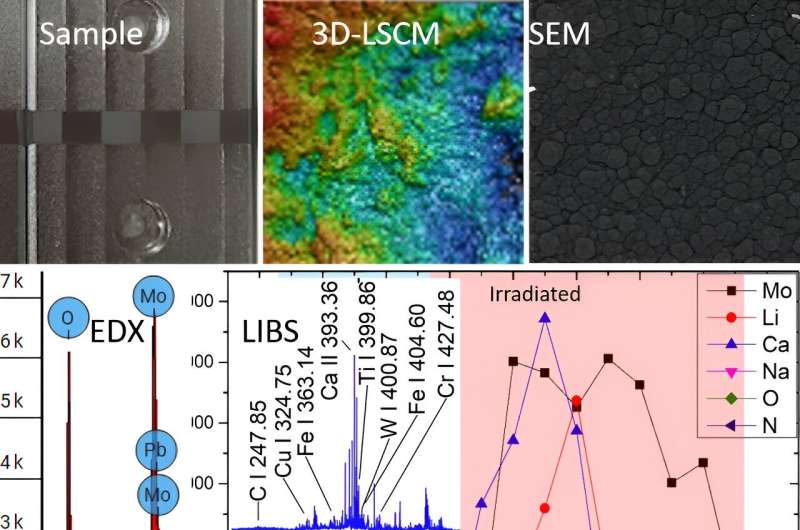Surface morphology of irradiated test tiles and depth profiling of impurities by laser-induced breakdown spectroscopy. Credit: Muhammad Imran
Researchers led by Prof. Luo Guangnan from the Hefei Institutes of Physical Science of the Chinese Academy of Sciences have made an important discovery about how materials break down and mix on the surfaces inside the experimental advanced superconducting tokamak (EAST). They found that material erosion is caused by excessive heat loads, particle fluxes to the first wall, and energetic ions during the plasma exposure.
Their results were published in the Journal of Nuclear Materials.
In the EAST tokamak, it's critical to manage how fuel is stored and how the plasma is cooled by impurities, which are particles released when the plasma interacts with the walls.
In this study, the researchers used a technique called laser-induced breakdown spectroscopy to study these impurities. They found that the impurities come from the erosion of various materials, such as tungsten, molybdenum, and carbon used in the tokamak's walls and limiters.
The rate at which these materials erode depends on factors such as the heat load, the energy of the ions hitting the surface, the mass of the particles, and the binding energy of the ions. How these impurities then redeposit onto the surfaces depends on properties such as the porosity and thermal expansion of the materials, as well as their structural compatibility and adhesion strength.
The study showed that a layer of impurities about three micrometers thick formed on the surfaces inside the tokamak, indicating that all components experienced erosion due to high heat loads and energetic ions.
"It helps us understand the wear and tear of materials in fusion reactors, which is key to improving their durability and efficiency," said Dr. Imran, a member of the research team.
More information: Muhammad Imran et al, Studies of erosion-deposition of plasma-facing materials due to plasma-wall interactions in EAST tokamak, Journal of Nuclear Materials (2024). DOI: 10.1016/j.jnucmat.2024.155195
Provided by Chinese Academy of Sciences























